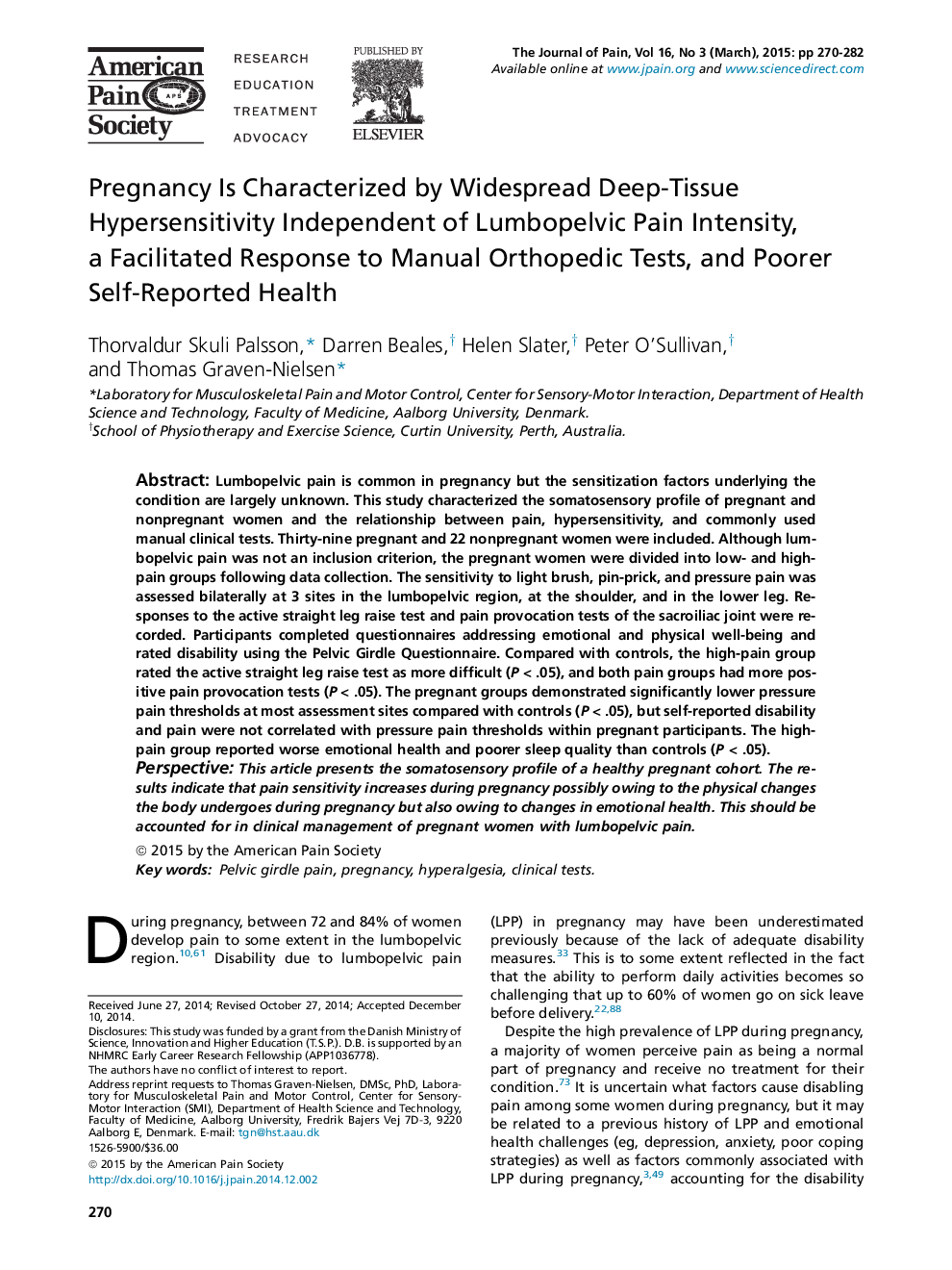| کد مقاله | کد نشریه | سال انتشار | مقاله انگلیسی | نسخه تمام متن |
|---|---|---|---|---|
| 2728584 | 1566736 | 2015 | 13 صفحه PDF | دانلود رایگان |

• The somatosensory profile of pregnant women was investigated.
• A relationship between psychophysical and psychometric variables was examined.
• Pregnant women had widespread hypersensitivity compared with controls.
• There are subtle differences in emotional health and sleep when comparing pain groups.
• The somatosensory profile in pregnancy is likely affected by several, parallel factors.
Lumbopelvic pain is common in pregnancy but the sensitization factors underlying the condition are largely unknown. This study characterized the somatosensory profile of pregnant and nonpregnant women and the relationship between pain, hypersensitivity, and commonly used manual clinical tests. Thirty-nine pregnant and 22 nonpregnant women were included. Although lumbopelvic pain was not an inclusion criterion, the pregnant women were divided into low- and high-pain groups following data collection. The sensitivity to light brush, pin-prick, and pressure pain was assessed bilaterally at 3 sites in the lumbopelvic region, at the shoulder, and in the lower leg. Responses to the active straight leg raise test and pain provocation tests of the sacroiliac joint were recorded. Participants completed questionnaires addressing emotional and physical well-being and rated disability using the Pelvic Girdle Questionnaire. Compared with controls, the high-pain group rated the active straight leg raise test as more difficult (P < .05), and both pain groups had more positive pain provocation tests (P < .05). The pregnant groups demonstrated significantly lower pressure pain thresholds at most assessment sites compared with controls (P < .05), but self-reported disability and pain were not correlated with pressure pain thresholds within pregnant participants. The high-pain group reported worse emotional health and poorer sleep quality than controls (P < .05).PerspectiveThis article presents the somatosensory profile of a healthy pregnant cohort. The results indicate that pain sensitivity increases during pregnancy possibly owing to the physical changes the body undergoes during pregnancy but also owing to changes in emotional health. This should be accounted for in clinical management of pregnant women with lumbopelvic pain.
Journal: The Journal of Pain - Volume 16, Issue 3, March 2015, Pages 270–282